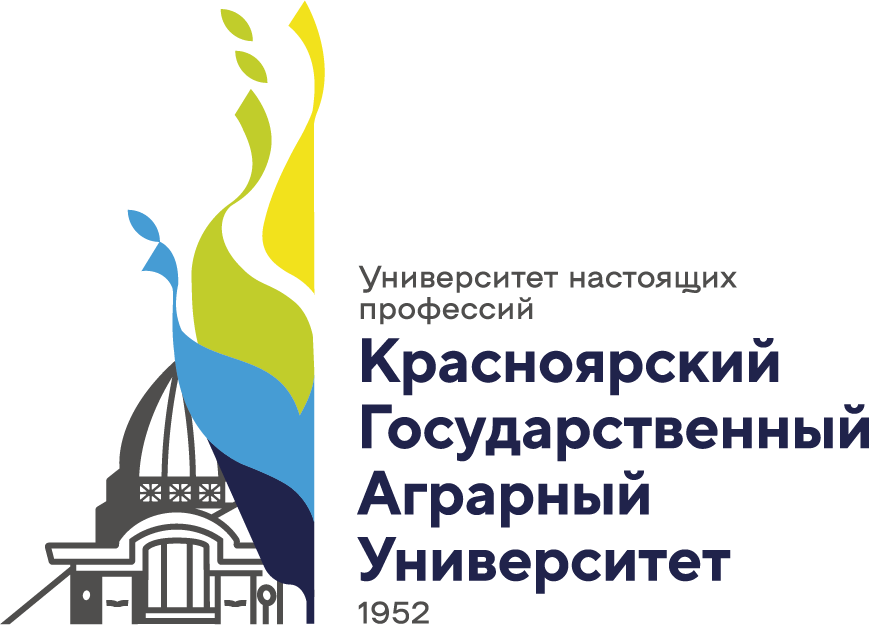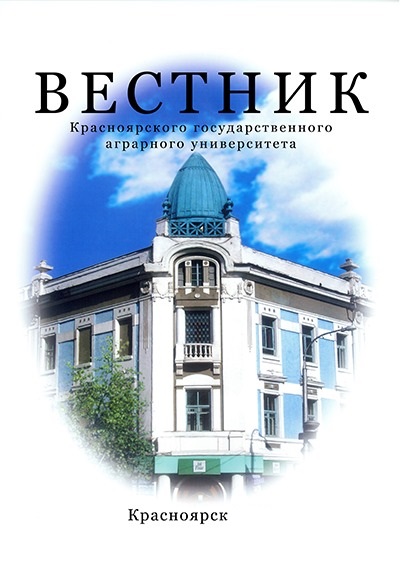The objective of the study was analyzing the changes in abundance of weed species in three survey cycles, clarifying the floristic composition of weeds, identifying the prevailing family and the most common species in the conditions of forest-steppe of Krasnoyarsk region. The first survey (1958-1959) was conducted by N.V. Sklyadnev, V. Egorov, V. Beleva (1960) and published in the Proceedings of the Krasnoyarsk agricultural institute, the results of the second (1989-1991) and the third period (2014-2015) are published for the first time. It was revealed that the weeds floristic composition is characterized by 95 species from 25 families. The predominant species of the families are Asteraceae Dumort., Brassicaceae Burnett., Poaceae Bernhart, Lamiaceae Lindl., Polygonaceae Juss, Caryophyllaceae Juss., Chenopodiaceae Vent., Plantaginaceae Juss., Fabaceae Lindl. and constitute 77, 9 % of the total number of plants. The proportion of juvenile species is 69,5 % (66 species), perennial species is 30,5 % (29 species) of the total number of weeds. Dicotyledonous weeds make up 87, 4 %, of which 30,1 % are species of perennial, monocot weeds are 10,4 %, including 2 perennial species. Comparison of the results of three periods survey revealed that in the last 50 years the area is dominated by 14 species of weeds: Sonchus arvensis L., Avena fatua L, Elytrigia repens (L.), Nevski, Setaria viridis (L.) Beauv, Chenopodium album L, Chenopodium aristatum L., Sisymbrium loeseliiL, Amaranthus retroflexus L, Fallopia convolvulus (L.) A. Love, Melandrium album (Mill.) Garcke, Erodium cicutarium (L.), Galeopsis bifida Boenn., Galium aparine L., Cannabis ruderalis Janish.
weeds, agrophytocenoses, adaptive-landscape agriculture, Sukhobuzimsky district, Krasnoyarsk region, forest-steppe
1. Agroekologicheskiy atlas Rossii i sopredel'nyh stran: ekonomicheski znachimye rasteniya, ih vrediteli, bolezni i sornye rasteniya / red. A.N. Afonin, S.L.Grin, N.I. Dzyubenko [i dr.]. - 2008. - URL: http://www.agroatlas.ru.
2. Arealy lekarstvennyh i rodstvennyh im rasteniy SSSR: atlas. - 2-e izd. - L.: Izd-vo Leningrad. un-ta, 1990. - 223 s.
3. Gerbariy Krasnoyarskogo GPU. - URL: http://herba.kspu.ru/index.php.
4. Cherepanov S.K. Sosudistye rasteniya Rossii i sopredel'nyh gosudarstv (v predelah byvshego SSSR). - SPb.: Mir i sem'ya, 1995. - 992 s.
5. Elektronnyy katalog sosudistyh rasteniy Aziatskoy Rossii. - URL: http://www-sbras.nsc.ru/win/elbib/atlas/flora/2569.html.
6. Sklyadnev N.V., Egorov V., Beleva V. Izuchenie sornoy rastitel'nosti lesostepnyh rayonov Krasnoyarskogo kraya na primere uchhoza «Minderlinskoe» // Tr. Krasnoyar. SHI MSH RSFSR. - 1960. - T. 7. - S. 96-105.
7. Novikova A.I., Taskina V.M. Vliyanie razlichnyh predshestvennikov na zasorennost' poley yarovoy pshenicy v polevyh sevooborotah Krasnoyarskoy lesostepi // Nauchnye osnovy sevooborotov i obrabotki pochvy v Vostochnoy Sibiri. - Irkutsk, 1975. - S. 59-64.
8. Beketova O.A. Vliyanie razlichnyh sistem osnovnoy obrabotki pochvy na zasorennost' polevogo sevooborota // Vestn. KrasGAU. - 1998. - S. 34-40.
9. Sevooborot - osnova sistem zemledeliya / A.D. Beketov, A.M. Berzin, V.M. Taskina [i dr.]. - Krasnoyarsk: Izd-vo KrasGAU, 2001. - S. 56-61.
10. Berzin A.M. Zelenye udobreniya v Sredney Sibiri. - Krasnoyarsk: Izd-vo KrasGAU, 2002. - 303 s.
11. Polosina V.A. Produktivnost' zernoparopropashnyh sevooborotov s chistymi i sideral'nymi parami na vyschelochennyh chernozemah Prieniseyskoy Sibiri: avtoref. dis. … kand. s.-h. nauk. - Krasnoyarsk, 2000. - 16 s.
12. Dorogoy A.A. Povyshenie effektivnosti sideral'nogo donnikovogo para v usloviyah Vostochnoy Sibiri. - Krasnoyarsk: Izd-vo KrasGAU, 2009. - S. 67-77.
13. Sklyadnev N.V., Egorov V.F. Sornye rasteniya i bor'ba s nimi. - Krasnoyarsk: Krasnoyar. kn. izd-vo, 1969. - 83 s.
14. Beketov A.D. Sornye rasteniya i mery bor'by s nimi. - Krasnoyarsk: Krasnoyar. kn. izd-vo, 1975. - 76 s.
15. Sistemy zemledeliya Krasnoyarskogo kraya. - Novosibirsk: Izd-vo Sib. otd. VASHNIL, 1982. - S. 255-258.










